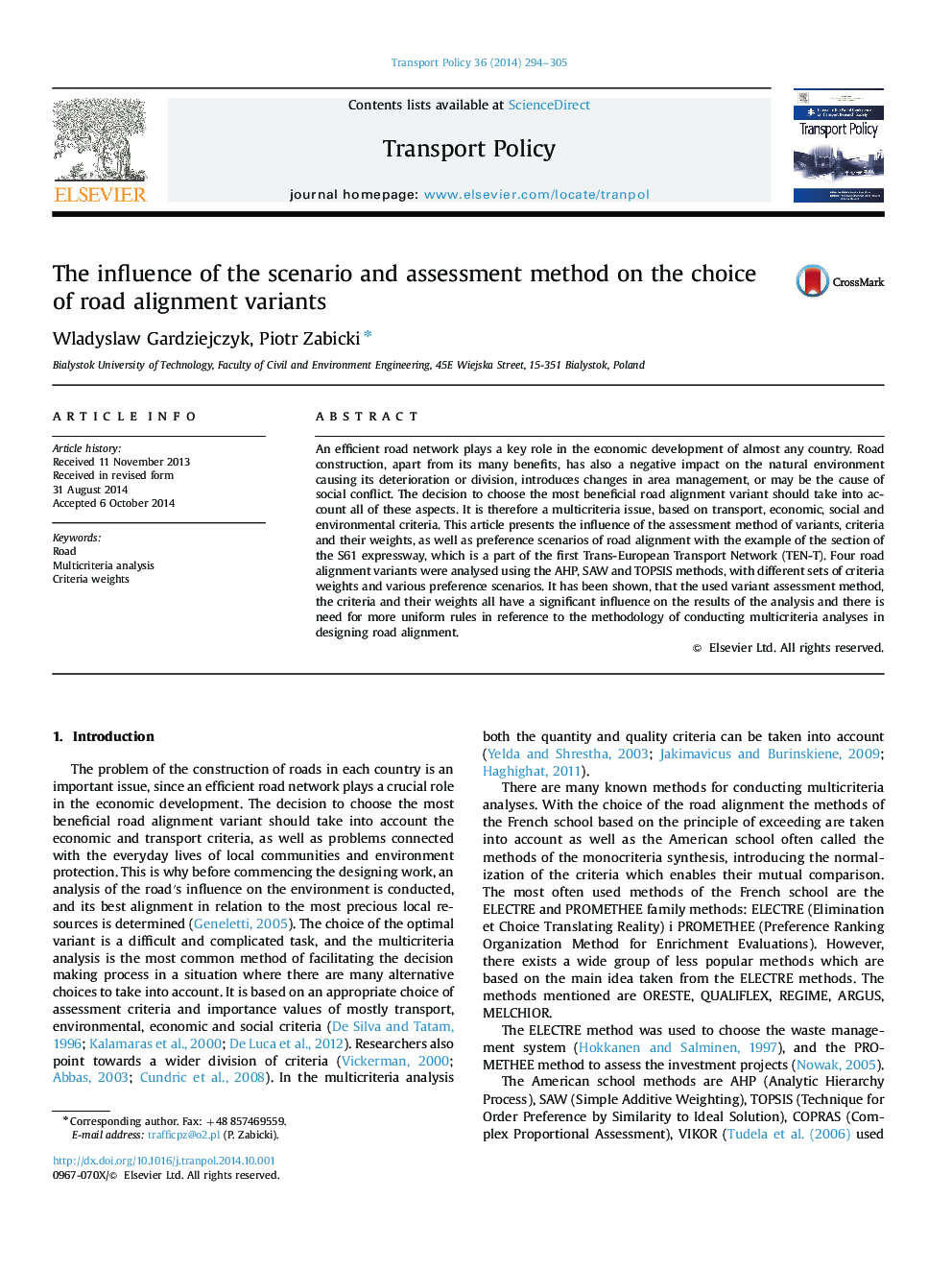| Article ID | Journal | Published Year | Pages | File Type |
|---|---|---|---|---|
| 7497876 | Transport Policy | 2014 | 12 Pages |
Abstract
An efficient road network plays a key role in the economic development of almost any country. Road construction, apart from its many benefits, has also a negative impact on the natural environment causing its deterioration or division, introduces changes in area management, or may be the cause of social conflict. The decision to choose the most beneficial road alignment variant should take into account all of these aspects. It is therefore a multicriteria issue, based on transport, economic, social and environmental criteria. This article presents the influence of the assessment method of variants, criteria and their weights, as well as preference scenarios of road alignment with the example of the section of the S61 expressway, which is a part of the first Trans-European Transport Network (TEN-T). Four road alignment variants were analysed using the AHP, SAW and TOPSIS methods, with different sets of criteria weights and various preference scenarios. It has been shown, that the used variant assessment method, the criteria and their weights all have a significant influence on the results of the analysis and there is need for more uniform rules in reference to the methodology of conducting multicriteria analyses in designing road alignment.
Related Topics
Social Sciences and Humanities
Social Sciences
Geography, Planning and Development
Authors
Wladyslaw Gardziejczyk, Piotr Zabicki,
